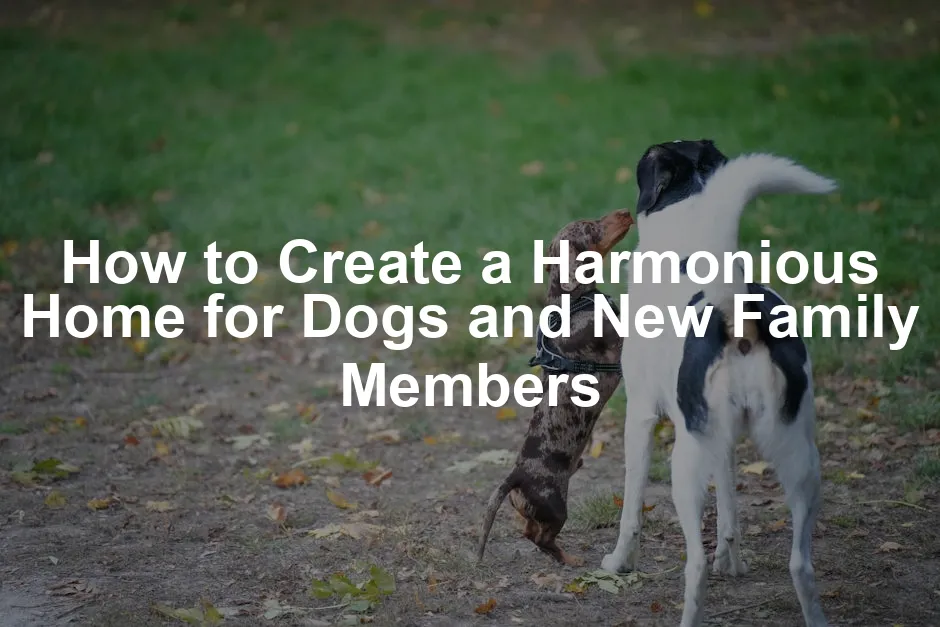Introduction
Creating a harmonious home for dogs and new family members is vital. It involves preparation, understanding, and patience. Dogs are sensitive to change, and their behavior can affect everyone in the household. A well-integrated family dynamic enhances everyone’s happiness, reducing stress for both pets and people.
Summary and Overview
In this article, we’ll discuss various strategies to achieve a peaceful coexistence. Introducing new family members, whether pets or babies, can be challenging. You may face conflicts due to territorial instincts or differing social needs. Our goal is to foster a harmonious environment where everyone feels safe and valued. Remember, patience, consistent training, and structured environments are essential for success.
Understanding Dog Behavior
Understanding canine behavior is crucial for successful introductions. Dogs are pack animals, and they instinctively establish a social hierarchy. This pack mentality can influence how they react to newcomers. For instance, if your existing dog feels threatened by a new member, it may lead to anxiety or aggressive behavior.
Territorial instincts also play a significant role. Dogs can perceive new family members as intruders in their space. This can trigger stress responses, such as barking or growling. It’s important to recognize these behaviors early to prevent escalation.
Moreover, learning to read dog body language is essential. Signs of stress can include stiff postures, tucked tails, or avoidance behaviors. Understanding these cues helps you intervene appropriately and guide your dog through adjustments.
Statistics reveal that integrating new pets can be complex. Research indicates that nearly 25% of dog owners face behavioral issues when introducing new family members. Knowing this can prepare you for potential challenges and encourage proactive management.
In summary, a solid grasp of your dog’s instincts and behaviors can ease transitions. By understanding their needs, you can create a peaceful atmosphere for all family members.

Preparing for a New Family Member
Pre-Introduction Preparations
Welcoming a new family member can be exciting yet daunting. The first step is to create a comfortable space for everyone. Set up separate areas for your existing pets and the newcomer. This gives each pet their own territory, reducing stress during the initial adjustment. Use baby gates or closed doors to create these safe zones.
Next, help your pets acclimate to the new family member’s scent. You can do this by letting them sniff items like blankets or toys that belong to the newcomer. This simple act can ease their anxiety and make the introduction smoother.
Before any introductions occur, ensure all pets have health checks. A visit to the veterinarian helps identify any potential health issues. This is crucial for everyone’s safety. A healthy start can significantly improve the chances of a harmonious coexistence.

Creating a Safe Space
Designating areas for feeding, resting, and play is essential. Each pet should have its own space to eat and relax without interference. This helps prevent any territorial disputes from arising. Ensure these spaces are cozy and inviting, filled with familiar scents and items.
Baby gates or crates can be valuable tools during this phase. Use them to temporarily separate pets during meal times or when introducing a new family member. This allows everyone to feel secure and gradually adjust to each other’s presence. Creating a safe space is critical for fostering positive interactions. The AmazonBasics Dog Crate is a great option for creating a secure area for your pets during this transition.
Creating a safe environment is essential for the well-being of all pets involved. Best practices for creating a safe space for pregnant dogs and puppies can help ensure a smooth introduction.
Training Your Dog
Training your dog is a key part of creating a harmonious home. Start by teaching essential commands like sit, stay, and come. These commands lay the foundation for good behavior and help manage interactions with new family members. Short, consistent training sessions work best, ensuring your dog remains engaged.
Positive reinforcement techniques, such as treats and praise, can motivate your dog. Celebrate small victories, as this builds confidence and strengthens your bond. Incorporating fun elements into training makes the process enjoyable for both of you.
Ongoing training and socialization are vital. Regularly expose your dog to new environments, people, and other animals. This helps them adapt to change and reduces anxiety. Socialization is crucial, especially when introducing new family members. Remember, a well-trained dog is more likely to respond positively to new situations. A Dog Training Clicker can be a helpful tool to reinforce those commands effectively.
Using positive reinforcement is crucial for effective training. Effective positive reinforcement techniques for stubborn dogs can make a significant difference in your dog’s learning.
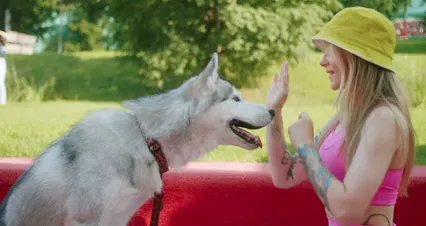
Introducing Dogs to New Family Members
Welcoming new family members into your home is exciting. However, it can create tension, especially when dogs are involved. Proper introductions are key to a peaceful coexistence. Here’s how to ensure that everyone, including your furry friends, feels comfortable.
Step-by-Step Introduction Process
Start by introducing dogs in neutral spaces. This can be a park or a quiet outdoor area. Avoid bringing them directly into your home at first, as it can create territorial feelings. Allow them to sniff each other while keeping a safe distance. Gradual exposure helps reduce anxiety.
During the first meeting, keep a close eye on their body language. Look for signs of stress, like stiff postures or raised hackles. If either dog seems uncomfortable, calmly separate them and try again later. Always remain relaxed; your energy influences your dog’s feelings.
Positive reinforcement is vital during these introductions. Reward calm behavior with treats and praise. This builds a positive association with the new family member. Celebrate small victories to encourage good interactions.
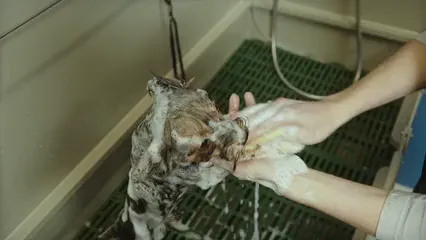
Specific Scenarios
When introducing a new dog to existing pets, patience is crucial. Allow the resident dog to adjust first. Start with short, supervised visits. If both dogs seem comfortable, gradually increase their time together.
Introducing dogs to babies or children requires extra caution. Let your dog observe the baby from a distance initially. Allow them to sniff items like blankets that carry the baby’s scent. Keep interactions supervised to ensure safety for both the baby and the dog.
Managing interactions between dogs and other pets, like cats, can be tricky. Keep the initial introductions controlled. Use a baby gate to allow them to see each other without direct contact. Monitor their reactions closely. If either pet shows signs of distress, separate them and try again later. A Richell Pet Pen can be a great solution for keeping everyone safe during these introductions.
Each introduction is unique. Take your time and ensure that all family members, human and canine, feel safe and loved. With patience and careful planning, you can create a harmonious home for everyone.
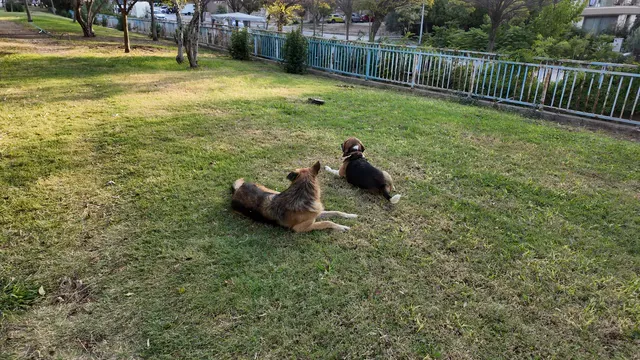
Managing Conflicts and Stress
Bringing a new family member into your home can stir up tension. Understanding common triggers for conflicts among pets is essential. One major trigger is feeding time. Dogs can become possessive over their food, leading to aggressive behavior. Playtime is another potential flashpoint. Roughhousing can escalate quickly, especially if one dog feels overwhelmed. Lastly, territory disputes often arise. Dogs may view newcomers as intruders in their space, resulting in growling or barking.
To manage these conflicts, it’s crucial to implement strategies that reduce stress. Structured routines help pets feel secure. Establish consistent feeding times and designate specific areas for each pet to eat. This separation can prevent food-related fights. Supervised interactions are vital too. When introducing a new dog, keep both animals under close watch. This way, you can step in if tensions rise. Gradual introductions in neutral spaces can ease initial friction.
Creating a calm atmosphere is key. Use positive reinforcement to reward good behavior during interactions. This encourages pets to associate each other with positive experiences. If the situation escalates, separate the pets and allow them to cool down. Over time, with patience and consistency, you can foster a peaceful coexistence.
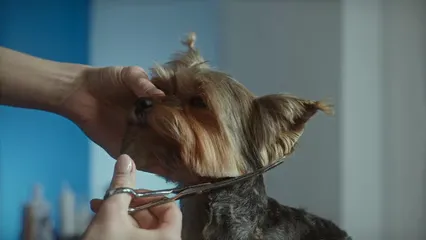
Building a Harmonious Environment
Daily Routines
Establishing daily routines is essential in creating harmony. Dogs thrive on predictability. Set consistent feeding, exercise, and play schedules. This structure helps them know what to expect and reduces anxiety. For instance, feed your dogs at the same time each day. Incorporate regular walks and play sessions to keep them engaged and happy. Consider using a PetSafe Healthy Pet Gravity Feeder to make feeding times more consistent and less hectic.
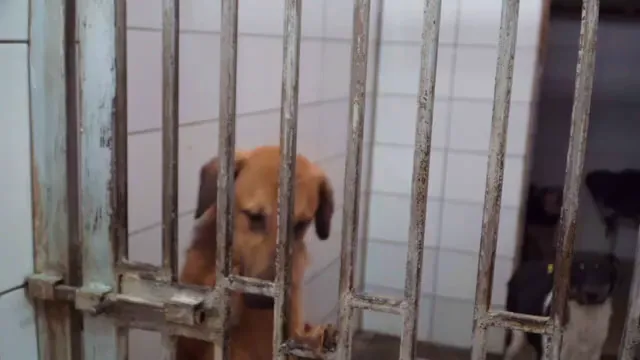
Quality Time with Each Pet
Building strong relationships with each dog is vital. One-on-one time helps them feel valued. Engage in activities that promote bonding. Whether it’s a walk, a game of fetch, or simple cuddling, these moments strengthen your connection. Remember, a happy dog contributes to a harmonious household. If you’re looking for a fun way to engage your dog, consider the Outward Hound Hide-A-Squirrel Puzzle Toy – it’s a great way to keep them entertained!
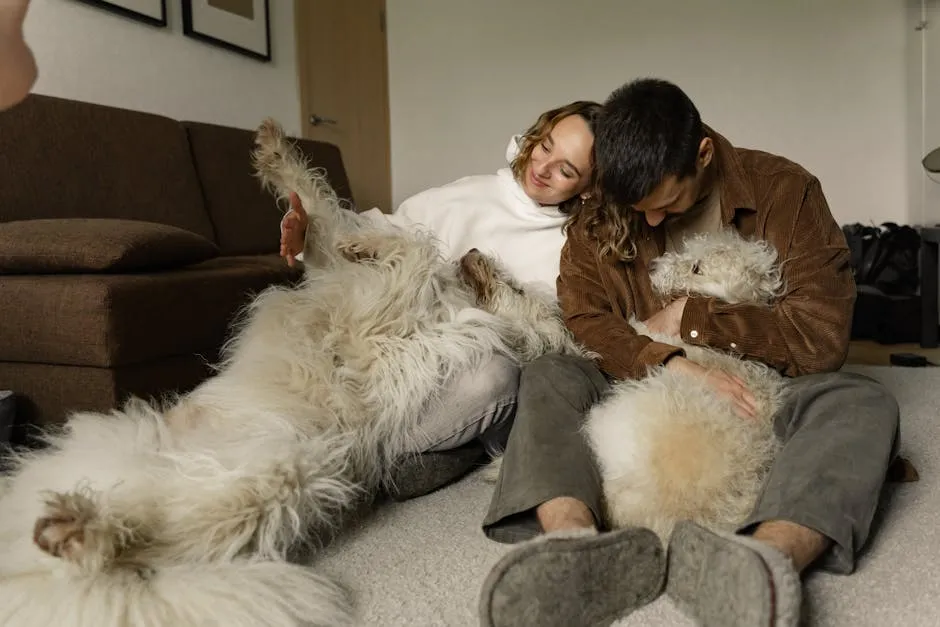
Recognizing Signs of Stress
Being aware of your dog’s stress signals is crucial. Signs of anxiety include excessive barking, pacing, or hiding. Recognizing these behaviors allows you to address their needs promptly. If your dog seems anxious, try calming techniques such as gentle petting or providing a safe space. Consider using calming products, like Calming Pheromone Diffuser for Dogs to help soothe them.
Creating a harmonious environment is not just about managing interactions. It’s about nurturing relationships and understanding each pet’s needs. With dedication and love, you can cultivate a peaceful home where everyone thrives.

Conclusion
Creating a harmonious home for dogs and new family members takes effort and understanding. We’ve discussed the importance of preparation, gradual introductions, and consistent training. Patience is vital as pets adjust to changes. Remember, each animal is unique and may need time to feel comfortable in their new environment.
By fostering positive interactions and respecting individual needs, you can build a loving atmosphere. Proactive steps will help integrate new family members seamlessly. Start today by implementing these strategies for a happier, more unified home.
Have you had experiences with integrating pets or new family members? Share your stories or ask questions in the comments! And if you’re looking for some unique treats for your furry friends, don’t forget to check out Woof & Brew Dog Tea for a refreshing twist!
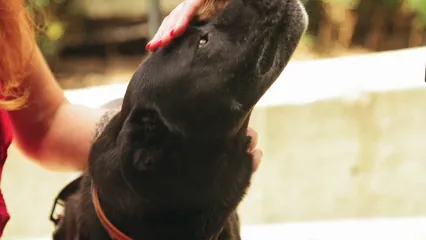
FAQs
What is the best way to introduce a new dog to existing pets?
Gradual introductions work best. Start in neutral areas. Monitor their behavior closely. This helps minimize stress and fosters positive interactions.
How can I prepare my dog for the arrival of a baby?
Acclimatization is key. Familiarize your dog with baby scents and sounds. Gradually introduce them to the baby, ensuring a calm environment.
What should I do if my dogs are fighting?
Separate them immediately and assess the situation. Use positive reinforcement to encourage calm behavior. If fights continue, consider consulting a professional trainer.
How long does it take for dogs to adjust to a new family member?
Adjustment periods vary. Typically, it can take several weeks to a few months for dogs to feel comfortable. Be patient and observant during this time.
Are there specific breeds that are better suited for multi-pet households?
Certain breeds, like Golden Retrievers and Labradors, are known for their friendly nature. More territorial breeds may require additional management and training for harmony.
Please let us know what you think about our content by leaving a comment down below! And if you’re in need of a reliable way to keep your pet’s grooming under control, don’t forget to check out the Furminator Undercoat Deshedding Tool – it’s a game changer for shedding season!
Thank you for reading till here 🙂
All images from Pexels

